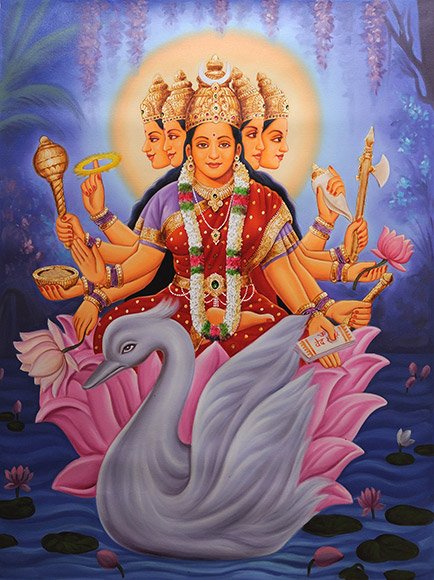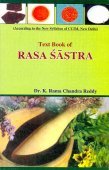Hamsagati, Haṃsagati, Hamsa-gati: 10 definitions
Introduction:
Hamsagati means something in Hinduism, Sanskrit, Marathi. If you want to know the exact meaning, history, etymology or English translation of this term then check out the descriptions on this page. Add your comment or reference to a book if you want to contribute to this summary article.
In Hinduism
Chandas (prosody, study of Sanskrit metres)
Source: Shodhganga: a concise history of Sanskrit Chanda literature1) Haṃsagati (हंसगति) is the alternative name of a Sanskrit metre (chandas) mentioned by Hemacandra (1088-1173 C.E.) in his auto-commentary on the second chapter of the Chandonuśāsana. Haṃsagati corresponds to Mahātaruṇī-dayita. Hemacandra gives these alternative names for the metres by other authorities (like Bharata), even though the number of gaṇas or letters do not differ.
2) Haṃsagati (हंसगति) refers to one of the 135 metres (chandas) mentioned by Nañjuṇḍa (1794-1868 C.E.) in his Vṛttaratnāvalī. Nañjuṇḍa was a poet of both Kannada and Sanskrit literature flourished in the court of the famous Kṛṣṇarāja Woḍeyar of Mysore. He introduces the names of these metres (e.g., Haṃsagati) in 20 verses.

Chandas (छन्दस्) refers to Sanskrit prosody and represents one of the six Vedangas (auxiliary disciplines belonging to the study of the Vedas). The science of prosody (chandas-shastra) focusses on the study of the poetic meters such as the commonly known twenty-six metres mentioned by Pingalas.
Shaktism (Shakta philosophy)
Source: Google Books: ManthanabhairavatantramHaṃsagati (हंसगति) refers to the “state of the gander”, according to the Manthānabhairavatantra, a vast sprawling work that belongs to a corpus of Tantric texts concerned with the worship of the goddess Kubjikā.—Accordingly, “The state of the Gander [i.e., haṃsagati] (arises) when all the energies (of the Moon) have dissolved away. The container of the world of the Gander is the first energy (of the Moon). Fierce (caṇḍā) she is Umā, the New Moon who illumines consciousness. The awakening of Kaula is its manifestation (udaya) (as) the deity of the group of six (Wheels). The deity is in the Tradition of the Cave and it is she who, by means (of her) modalities, is in the six (Wheels)”.

Shakta (शाक्त, śākta) or Shaktism (śāktism) represents a tradition of Hinduism where the Goddess (Devi) is revered and worshipped. Shakta literature includes a range of scriptures, including various Agamas and Tantras, although its roots may be traced back to the Vedas.
Natyashastra (theatrics and dramaturgy)
Source: Shodhganga: Elements of Art and Architecture in the Trtiyakhanda of the Visnudharmottarapurana (natya)Haṃsagati (हंसगति) refers to the “gait of the swan” and represents one of the various Gatis (“way of walking”) (in Indian Dramas), according to the Abhinayadarpaṇa.—Accordingly, gaits (gatis) are explained along with some particular hand gestures. It shows that footsteps are to be followed by some hand postures. In the gait of swan i.e., haṃsagati, the actor or dancer should place one foot after another. The distance between two feet should be half a cubit and the hands should be in kapitthahasta.

Natyashastra (नाट्यशास्त्र, nāṭyaśāstra) refers to both the ancient Indian tradition (shastra) of performing arts, (natya—theatrics, drama, dance, music), as well as the name of a Sanskrit work dealing with these subjects. It also teaches the rules for composing Dramatic plays (nataka), construction and performance of Theater, and Poetic works (kavya).
Languages of India and abroad
Marathi-English dictionary
Source: DDSA: The Molesworth Marathi and English Dictionaryhaṃsagati (हंसगति).—a (S) haṃsagāminī a (S In poetry passim.) That stalks like a swan;--a female.
Source: DDSA: The Aryabhusan school dictionary, Marathi-Englishhaṃsagati (हंसगति) [-gāminī, -गामिनी].—a That stalks like a swan; -a female.
Marathi is an Indo-European language having over 70 million native speakers people in (predominantly) Maharashtra India. Marathi, like many other Indo-Aryan languages, evolved from early forms of Prakrit, which itself is a subset of Sanskrit, one of the most ancient languages of the world.
Sanskrit dictionary
Source: DDSA: The practical Sanskrit-English dictionaryHaṃsagati (हंसगति).—a. having a swan's gait, stalking in a stately manner.
Haṃsagati is a Sanskrit compound consisting of the terms haṃsa and gati (गति).
Source: Cologne Digital Sanskrit Dictionaries: Shabda-Sagara Sanskrit-English DictionaryHaṃsagati (हंसगति).—Adj. Having a swan’s gait.
Source: Cologne Digital Sanskrit Dictionaries: Cappeller Sanskrit-English DictionaryHaṃsagati (हंसगति).—[feminine] moving (gracefully) like a swan.
Source: Cologne Digital Sanskrit Dictionaries: Monier-Williams Sanskrit-English DictionaryHaṃsagati (हंसगति):—[=haṃsa-gati] [from haṃsa] mfn. having a swan’s gait, [Vikramorvaśī]
Sanskrit, also spelled संस्कृतम् (saṃskṛtam), is an ancient language of India commonly seen as the grandmother of the Indo-European language family (even English!). Closely allied with Prakrit and Pali, Sanskrit is more exhaustive in both grammar and terms and has the most extensive collection of literature in the world, greatly surpassing its sister-languages Greek and Latin.
Kannada-English dictionary
Source: Alar: Kannada-English corpusHaṃsagati (ಹಂಸಗತಿ):—
1) [noun] the stately gait of swans.
2) [noun] (pros.) a metrical verse of four lines each having seven groups of three syllables followed by a short syllable and a long syllable (uuu, u-u, u-u, u-u, u-u, u-u, u-u, u, - ).
Kannada is a Dravidian language (as opposed to the Indo-European language family) mainly spoken in the southwestern region of India.
See also (Relevant definitions)
Full-text: Mahatarunidayita, Camakanem, Swan, Hamsa, Prakashini, Bodhaprakashini, Sambodhana, Shatkadevata, Guhamnaya, Udara, Udaya, Shatka.
Relevant text
Search found 3 books and stories containing Hamsagati, Haṃsagati, Hamsa-gati, Haṃsa-gati; (plurals include: Hamsagatis, Haṃsagatis, gatis). You can also click to the full overview containing English textual excerpts. Below are direct links for the most relevant articles:
Gati in Theory and Practice (by Dr. Sujatha Mohan)
Description of Gati as in Bharatārṇava < [Chapter 2 - Concept and technique of Gati]
The Shiva Purana (by J. L. Shastri)
Chapter 35 - Śiva-sahasranāma: the thousand names of Śiva < [Section 4 - Koṭirudra-Saṃhitā]
The Linga Purana (by J. L. Shastri)
Chapter 98 - Thousand names of Śiva (Sahasranāma) < [Section 1 - Uttarabhāga]
Related products
